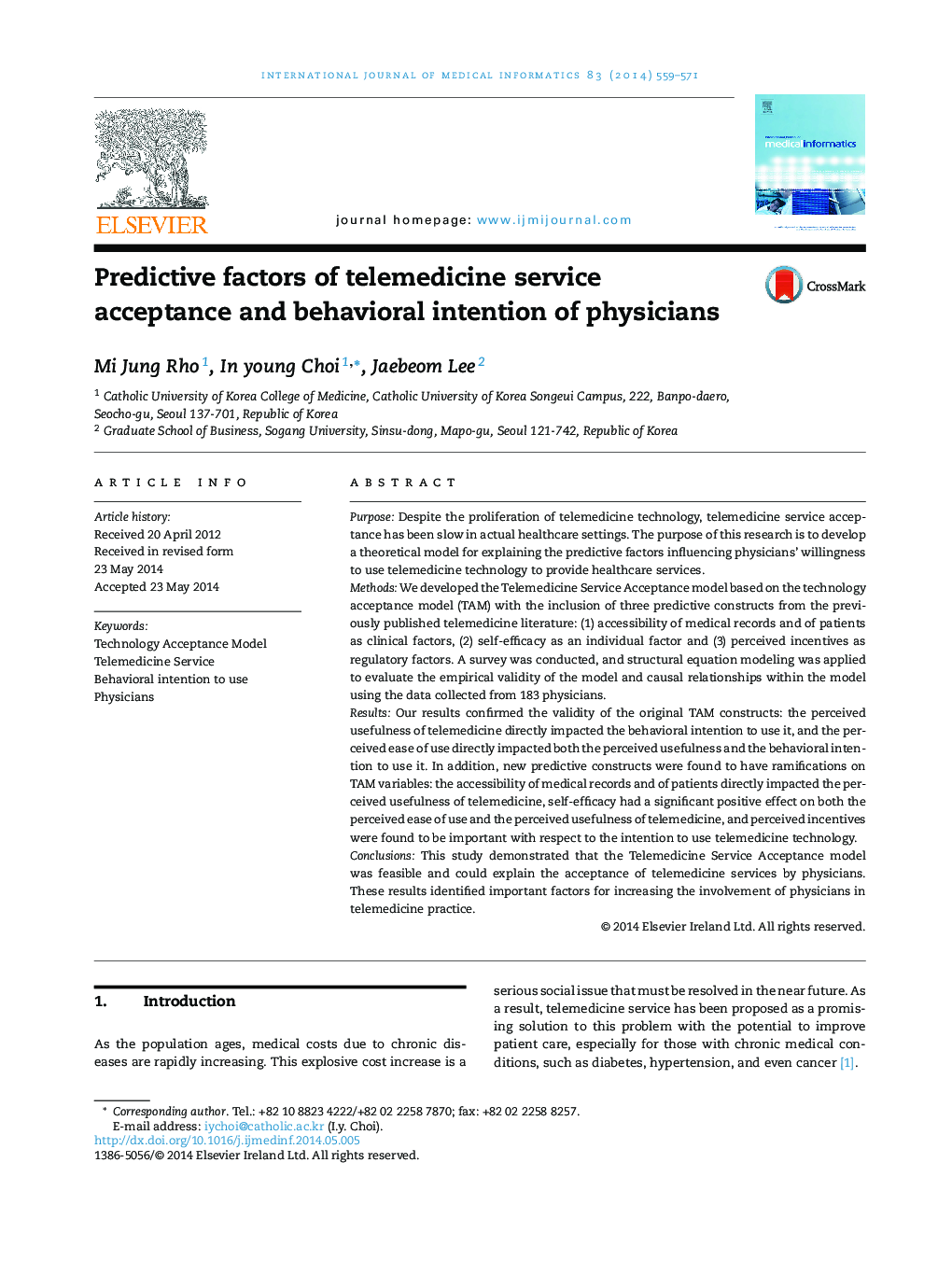| Article ID | Journal | Published Year | Pages | File Type |
|---|---|---|---|---|
| 516529 | International Journal of Medical Informatics | 2014 | 13 Pages |
•Physicians play a key role in telemedicine acceptance in South Korea.•Basically, the original TAM variables are found to be important to explain the healthcare technology acceptance.•The new model is required to explain the acceptance of physicians for telemedicine services with addition of three factors.•The TSA model included original TAM variables and new predictive constructs to explain physicians’ use of telemedicine services.
PurposeDespite the proliferation of telemedicine technology, telemedicine service acceptance has been slow in actual healthcare settings. The purpose of this research is to develop a theoretical model for explaining the predictive factors influencing physicians’ willingness to use telemedicine technology to provide healthcare services.MethodsWe developed the Telemedicine Service Acceptance model based on the technology acceptance model (TAM) with the inclusion of three predictive constructs from the previously published telemedicine literature: (1) accessibility of medical records and of patients as clinical factors, (2) self-efficacy as an individual factor and (3) perceived incentives as regulatory factors. A survey was conducted, and structural equation modeling was applied to evaluate the empirical validity of the model and causal relationships within the model using the data collected from 183 physicians.ResultsOur results confirmed the validity of the original TAM constructs: the perceived usefulness of telemedicine directly impacted the behavioral intention to use it, and the perceived ease of use directly impacted both the perceived usefulness and the behavioral intention to use it. In addition, new predictive constructs were found to have ramifications on TAM variables: the accessibility of medical records and of patients directly impacted the perceived usefulness of telemedicine, self-efficacy had a significant positive effect on both the perceived ease of use and the perceived usefulness of telemedicine, and perceived incentives were found to be important with respect to the intention to use telemedicine technology.ConclusionsThis study demonstrated that the Telemedicine Service Acceptance model was feasible and could explain the acceptance of telemedicine services by physicians. These results identified important factors for increasing the involvement of physicians in telemedicine practice.
